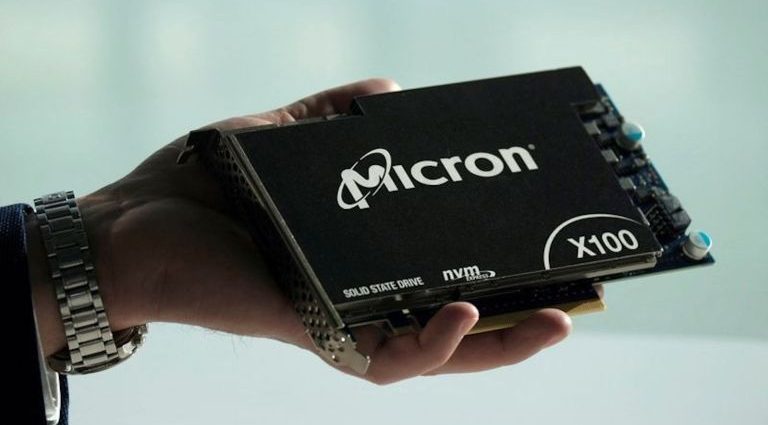Japan’s Ministry of Economy, Trade and Industry (METI) has announced its intention to contribute up to 46.5 billion yen (US$321 million) to support the production of Micron Technology’s most advanced DRAM memory chips in Hiroshima.
The subsidy, announced on September 30, should boost the competitiveness of both Micron and Japan’s semiconductor industry vis-à-vis South Korea’s Samsung and SK hynix, and strengthen the US-Japan technology alliance.
Micron is the world’s third-largest maker of DRAM – an acronym for dynamic random-access memory – with 23% of the global market in 2021, according to IC Insights.
Market leader Samsung Electronics had 44% while its Korean rival SK hynix had 28%. Most of the remaining share was held by Nanya and other Taiwanese companies; China’s ChangXin Memory had less than 2%.
DRAM is used in PCs, data center servers, smartphones and other applications, and is the largest category of semiconductor memory in terms of revenue.
Micron plans to make its newest version of DRAM, known as 1-beta, at its plant in Hiroshima. Micron acquired the plant in 2013 when it bought 100% of Japanese DRAM maker Elpida, which had gone bankrupt. Micron is now the only DRAM maker of significance in Japan.
Micron CEO Sanjay Mehrotra told investors at the end of September that the company is “on track to begin the ramp of our 1ß (1-beta) DRAM node in manufacturing by the end of calendar 2022.” 1-alpha chips are already being made in Hiroshima.

Meanwhile, US Ambassador to Japan Rahm Emanuel weighed in, saying in a statement, “The milestone announcement today by METI and Micron symbolizes the investment and integration of our two economies and supply chains. And that will only accelerate from here forward.”
Indeed, that integration is gathering pace. In late July, US Secretary of State Antony Blinken and Secretary of Commerce Gina Raimondo, together with Japan’s Minister for Foreign Affairs Yoshimasa Hayashi and Minister of Economy, Trade and Industry Koichi Hagiuda, held the first meeting of the US-Japan Economic Policy Consultative Committee.
That meeting produced a statement that the two governments “seek to advance efforts under the Japan-US Commercial and Industrial Partnership and other frameworks to foster supply chain resilience in strategic sectors, including, in particular, semiconductors…”
See: “US, Japan reaching for a 2-nm chip breakthrough“
Less than a week earlier, METI had announced a subsidy of up to 92.9 billion yen (about $640 million) for Japan’s Kioxia Holdings and its US joint venture partner Western Digital to support the production of NAND flash memory at Kioxia’s facilities in Yokkaichi, Mie Prefecture.
As noted in the press release, “The subsidy will be granted under a designated government program aimed at facilitating corporate investment in cutting-edge semiconductor production facilities and securing stable production of semiconductors in Japan.”
NAND flash is the other widely-used category of semiconductor memory. Invented by Kioxia’s predecessor Toshiba, it is found in memory cards, USB drives, solid state drives (SSDs) and cell phones.
Western Digital is a leading producer of SSDs, memory cards and USB drives. It has been working with Kioxia – and, before that, Toshiba – for around 20 years.
Recent TrendForce data shows Samsung leads the global NAND flash memory market with a 35% share, Kioxia-Western Digital second with 31%, SK hynix third with 18% and Micron fourth with 11%.

China’s Yangtze Memory (YMTC) has less than 5% of the NAND flash market, but that percentage may rise with the completion of its second factory, expected within the next few months.
YMTC’s NAND chips are reportedly good enough to be used in the iPhone 14, which has raised the hackles of American politicians who want it sanctioned.
For Apple, YMTC offers an alternative to Kioxia-Western Digital, Samsung and SK hynix that would broaden its supply base and help it negotiate lower prices. For Kioxia-Western Digital, it means more competition. In the eyes of the US government, it is a threat to national security.
For Japan, subsidizing Kioxia-Western Digital is key to defending and promoting the nation’s semiconductor industry against a Chinese upstart and two large Korean competitors.
Last March, Kioxia announced plans to build a new, state-of-the-art NAND flash memory factory in Kitakami, Iwate Prefecture. The groundbreaking ceremony was held in April, completion was expected in 2023 and unnamed sources told the press that the cost might reach one trillion yen (around $7 billion).
But global demand for semiconductors has since declined, production at existing facilities has been cut and when the new factory might start production is anybody’s guess.
Nevertheless, it is clear that Kioxia and Western Digital hope to maintain or improve their position in the market over the long term. This is also true for Micron, which is planning for long-term expansion while reducing current production and capital spending.
In the words of Micron CEO Mehrotra: “Following passage of the CHIPS Act [which President Biden signed in August], Micron announced our intent to invest $40 billion through the end of the decade in leading-edge memory manufacturing in the US, contingent on CHIPS Act support.”

Companies accepting subsidies under the CHIPS Act are barred from building new facilities in China, but they are encouraged to invest in Japan and other countries regarded as friendly by the US government.
The Japanese government also supports investment from Taiwan. It is now subsidizing Japan Advanced Semiconductor Manufacturing (JASM) – a joint venture between Taiwanese foundry TSMC, Sony and Toyota-affiliated auto parts maker Denso – to the tune of 476 billion yen ($3.3 billion).
That is about 40% of the estimated cost of the venture’s new factory, which is now under construction. Production is scheduled to start by the end of 2024.
See: “Sony, Samsung duel for image sensor lead”
Follow this writer on Twitter at @ScottFo83517667

